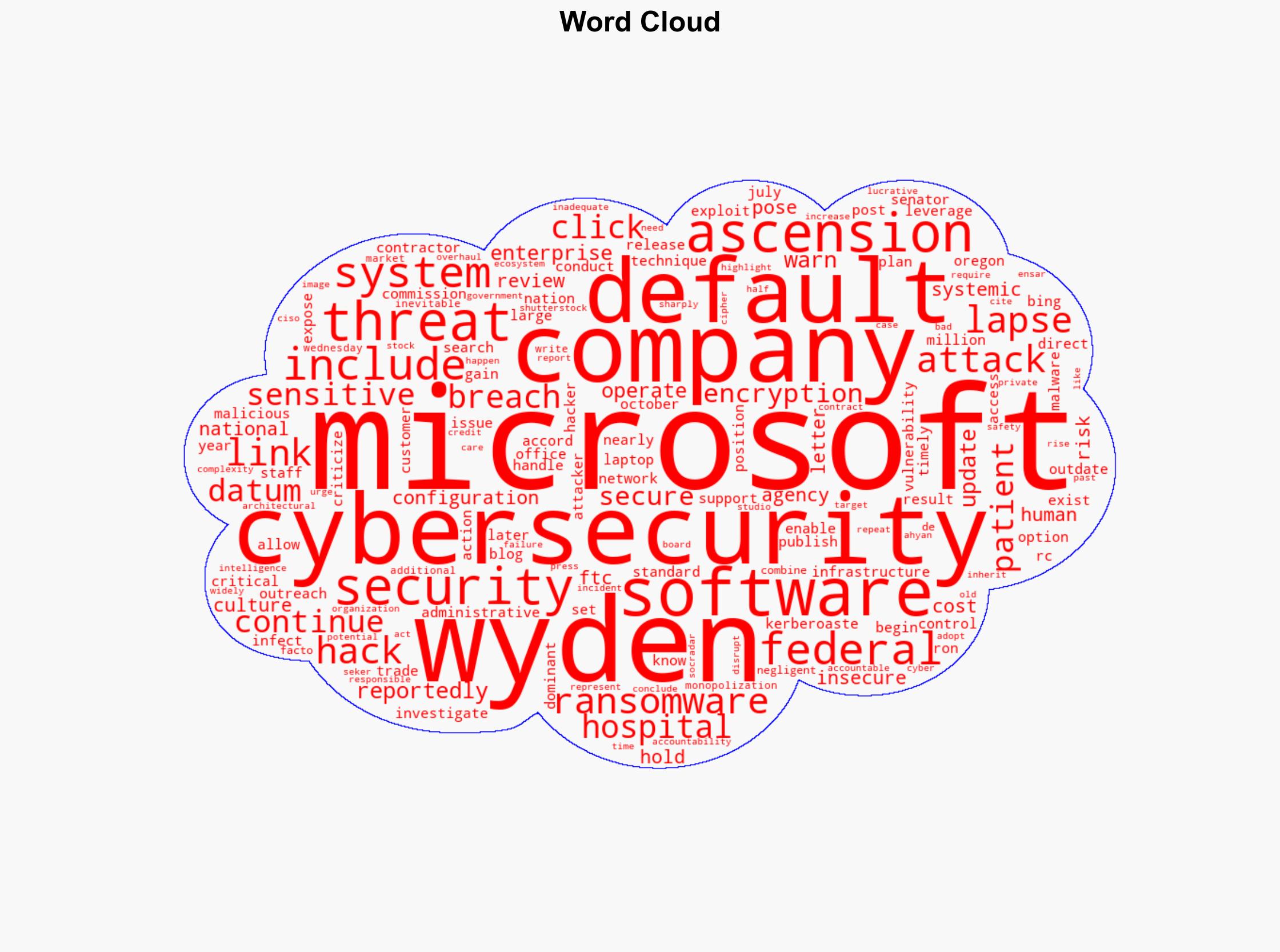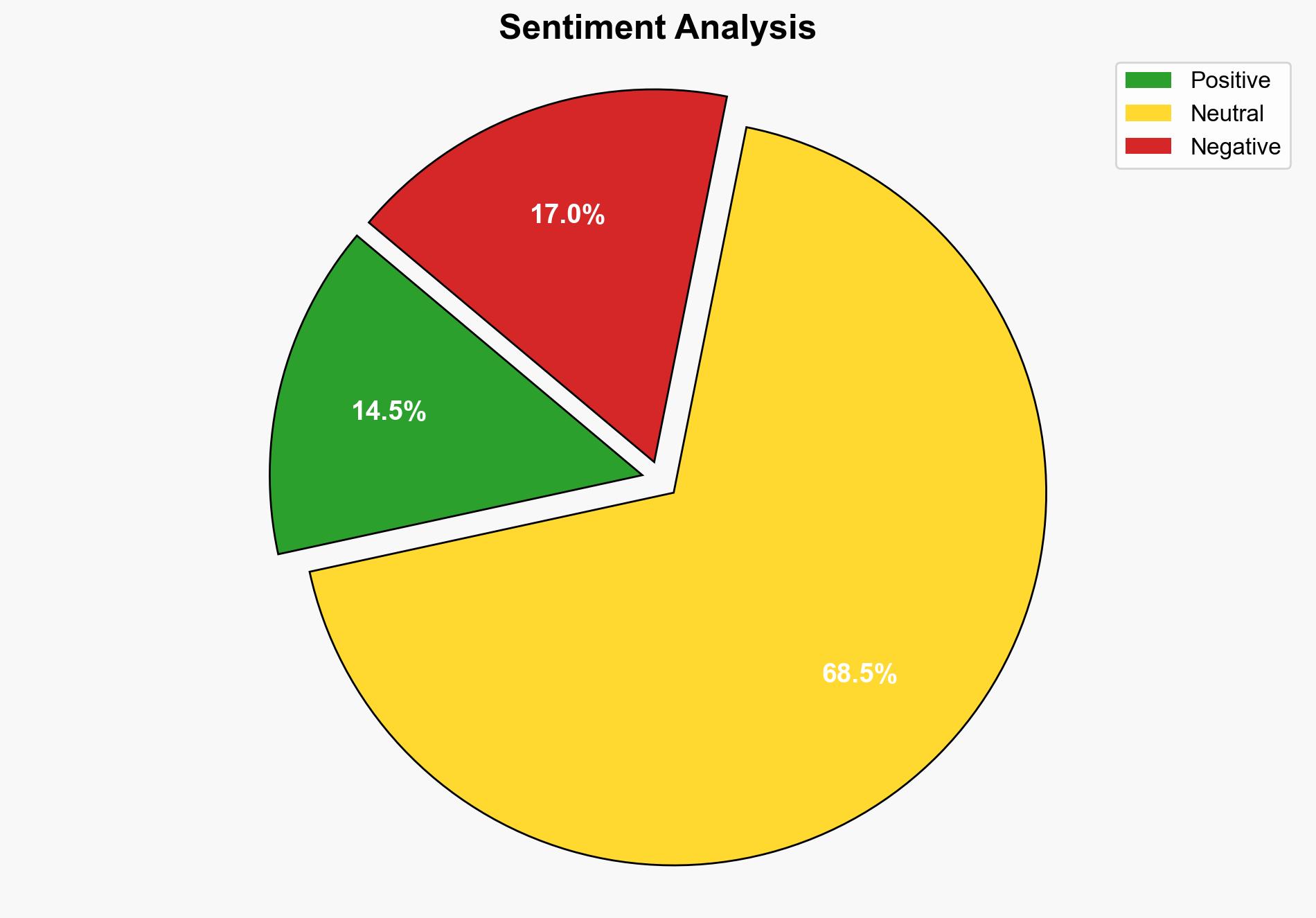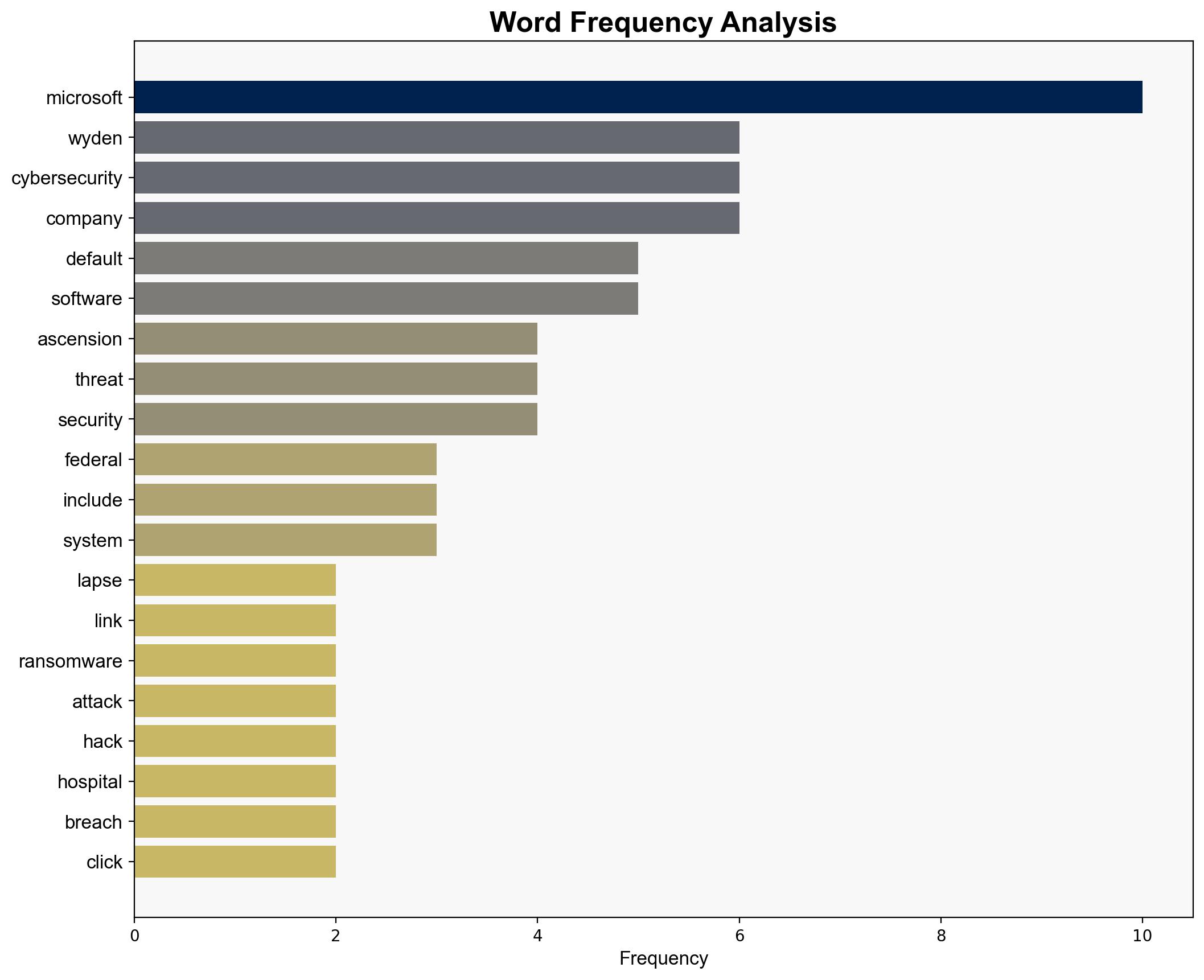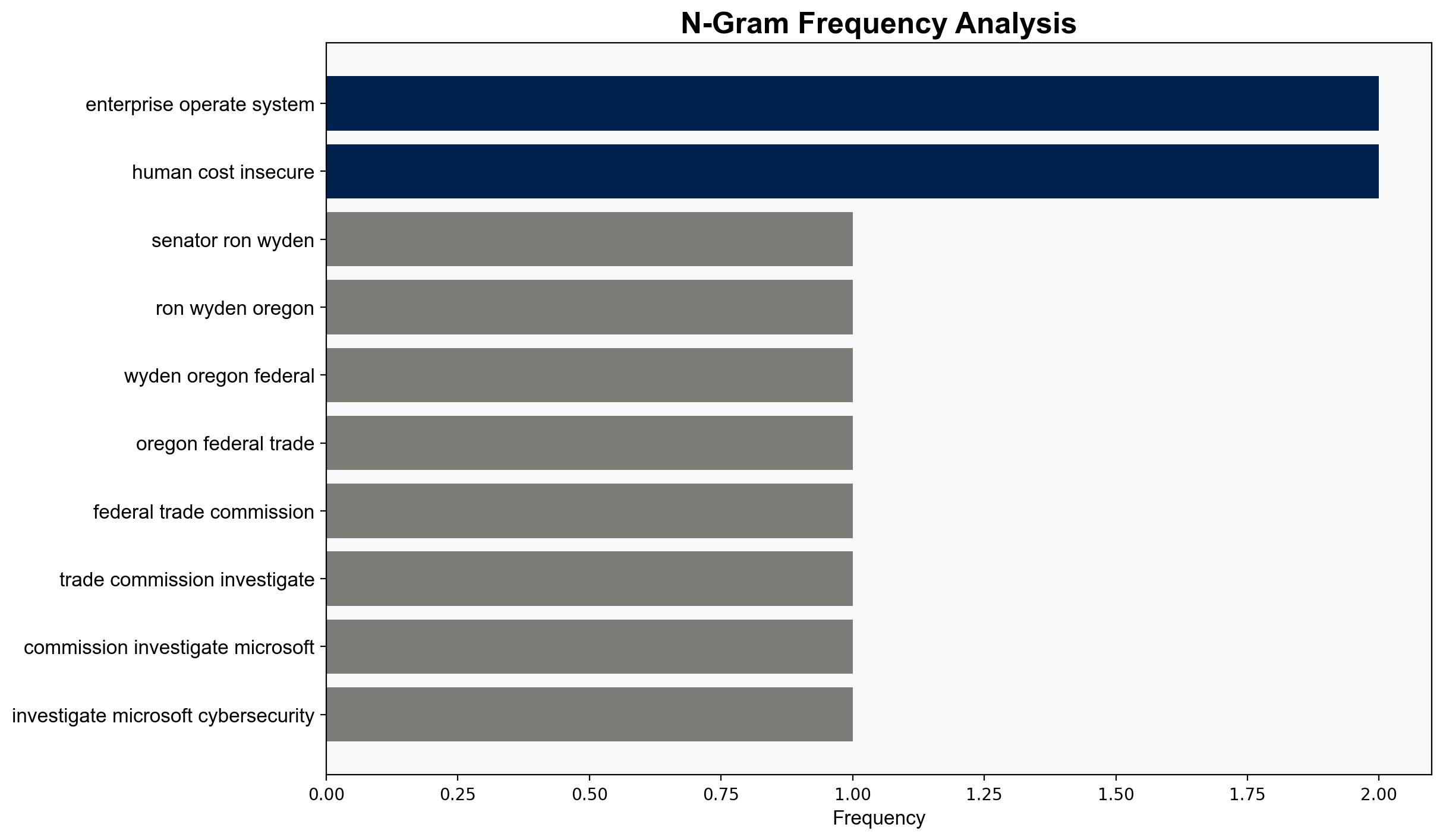Wyden Urges FTC Investigation Over Ascension Ransomware Hack – Infosecurity Magazine
Published on: 2025-09-11
Intelligence Report: Wyden Urges FTC Investigation Over Ascension Ransomware Hack – Infosecurity Magazine
1. BLUF (Bottom Line Up Front)
The most supported hypothesis is that Microsoft’s cybersecurity practices, particularly its default configurations and delayed response to known vulnerabilities, significantly contributed to the Ascension ransomware attack. This poses a national security risk due to the potential for similar breaches in critical infrastructure. Confidence level: Moderate. Recommended action: Initiate a comprehensive investigation into Microsoft’s cybersecurity practices and enforce stricter regulations on software security standards.
2. Competing Hypotheses
1. **Microsoft’s Default Security Configurations as a Primary Factor**: The ransomware attack on Ascension was primarily facilitated by Microsoft’s inadequate default security settings and delayed response to vulnerabilities, which allowed attackers to exploit the system.
2. **Contractor Negligence as a Primary Factor**: The breach was primarily due to negligence by the contractor who clicked on a malicious link, with Microsoft’s security settings playing a secondary role in the attack’s success.
Using ACH 2.0, the first hypothesis is better supported by the evidence, including Microsoft’s delayed response to known vulnerabilities and the systemic risks associated with its default configurations.
3. Key Assumptions and Red Flags
– Assumption: Microsoft’s default security settings are inadequate and significantly contribute to vulnerabilities.
– Red Flag: The timeline of Microsoft’s response to vulnerabilities suggests a pattern of delayed action.
– Potential Bias: The focus on Microsoft may overlook other contributing factors, such as contractor training and organizational security protocols.
– Missing Data: Detailed information on the contractor’s cybersecurity training and the specific security measures in place at Ascension prior to the attack.
4. Implications and Strategic Risks
The incident highlights the broader risk of systemic vulnerabilities in widely used software platforms, potentially leading to cascading failures across critical infrastructure. This could result in significant economic and operational disruptions, particularly in sectors like healthcare. Geopolitically, it raises concerns about the resilience of national infrastructure against cyber threats.
5. Recommendations and Outlook
- Conduct a thorough investigation into Microsoft’s cybersecurity practices and enforce compliance with updated security standards.
- Enhance contractor cybersecurity training to prevent similar incidents.
- Best Case: Microsoft implements robust security measures, reducing the risk of future breaches.
- Worst Case: Continued vulnerabilities lead to more significant breaches, affecting critical infrastructure.
- Most Likely: Incremental improvements in cybersecurity practices, with ongoing risks due to the widespread use of outdated configurations.
6. Key Individuals and Entities
– Ron Wyden
– Microsoft
– Ascension
7. Thematic Tags
national security threats, cybersecurity, counter-terrorism, regional focus




